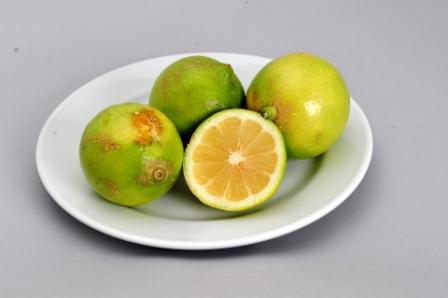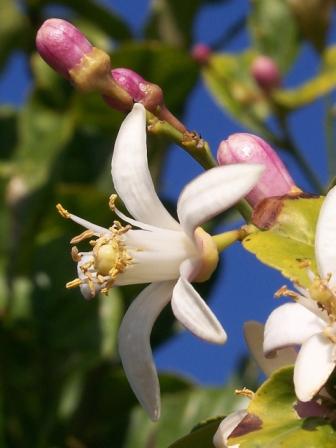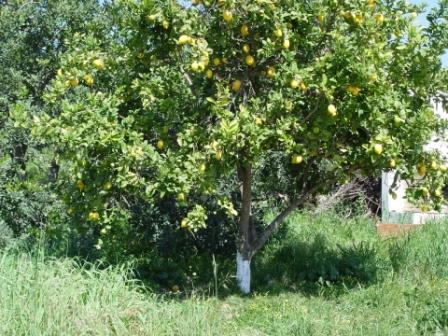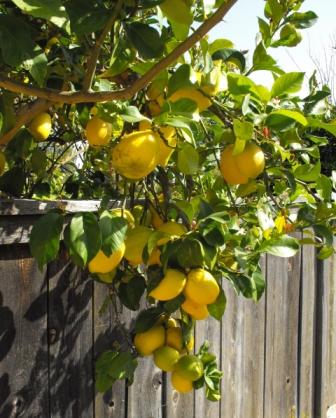Growth : Medium
Height : 3.00 m
Natural Regeneration :
Natural Regeneration
It is propagated by seed.
Artificial Regeneration
- Propagted by budding and air layeirng.
Seed collection Storage
- Seeds are self-ferrtile.
- The mature fruits are collected during warm weather climate.
- The seeds are collected from 3-4 year old tree.
- The seeds are stored in container is possible.
Pretreatment
Nursery Technique
- The seed is best sown in bed as soon as it is ripe, after thoroughly rinsing it. Germination usually takes place within 2 - 3 weeks at 13°c.
- The seed is usually polyembrionic, two or more seedlings arise from each seed and they are genetically identical to the parent but they do not usually carry any virus that might be present in the parent plant.
- Layering should be done in October.
Plantation technique :
- The best season of planting is June to August.
- Pits of the size of 60 cm x 60 cm x 60 cm may be dug for planting seedlings.
- 10 kg of FYM and 500 g of superphosphate may be applied per pit while planting. With good irrigation system, planting may be done in other months.
- Normal spacing – 4.5 m x 4.5 m ,Plant population – 494 / ha.
- In fertile soils and in high rainfall areas spacing may be 5 m x 5m.
Care & Disease Control :
Lime farming Irrigation :
- Citrus requires life saving watering in the first year during winter and summer.
- Irrigation improves the plant growth, flowering and fruiting in citrus.
- Under unirrigated condition chances of damage to spring blossom is high and the next crop maturing in October-November may be heavier.
Trimming and Pruning :
- In order to allow the growth of a strong trunk, all shoots in the first 40-50 cm from ground level developed in the early stage should be removed.
- Cross twigs and water suckers are to be removed early.
- The bearing trees require little or no pruning.Control measures of major pests are indicated below:
1. Citrus psylla: Spraying of malathion – 0.05% or monocrotophos – 0.025% or carbaryl – 0.1%.
2. Leaf miner : Spraying of phosphomidon @ 1 ml or monocrotophos @ 1.5 ml. per litre 2 or 3 times fortnightly.
3. Scale insects: Spraying of parathion (0.03%) emulsion, dimethoate 150 ml and 250 ml kerosene oil in 100 litre of water or malathion@ 0.1 % or carbaryl @ 0.05% plus oil 1%.
Irrigation :
For proper growth and survival it is necessary to give one or two waterings after planting. This is specifically required in arid regions. Irrigation after planting is not a prerequisite in areas having sufficient soil moisture and precipitation. Higher survival rate and better rate of growth is reported when soil and water conservation measures are also adopted
Recommended Harvest :
2-3 years
Yield :
In 4th year lemon yield 40-50 fruits per plant
Agro Forestory :
Leguminous vegetables like cow peas, french bean, peas or any vegetables, etc., may be grown in citrus orchards. Intercropping is advisable only during the initial two to three years.
Major uses :
- A semi-drying oil obtained from the seed is used in soap making.
- An essential oil from the peel is used as a food flavouring and also in perfumery and medicines.
- The dried fruit rind has been used as an insect repellent in the clothes cupboard and also in potpourri.
- The juice of the fruit is used for polishing bronze and other metals that have been neglected.
- The juice is used as a bleaching agent Wood - nicely veined, it takes a beautiful polish.
Other uses :
- Citrus species contain a wide range of active ingredients and research is still underway in finding uses for them.
- They are rich in vitamin C, bioflavonoids, acids and volatile oils.
- They also contain coumarins such as bergapten which sensitizes the skin to sunlight.
- The fruit is rich in vitamin C which helps the body to fight off infections and also to prevent or treat scurvy.





